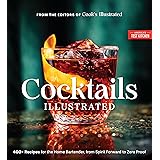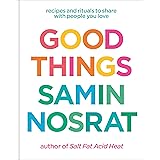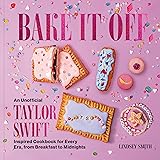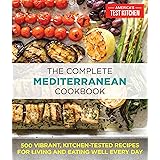The culinary landscape of India is incredibly diverse, yet some dishes transcend mere regional identity to become symbols of historical resilience and enduring nourishment. The video above eloquently touches upon the profound history embedded within a seemingly simple dish: Litti Chokha. Far from being just a meal, this iconic Bihari delicacy carries centuries of stories, from the battlefields of ancient empires to the humble hearths of rural families. It represents a fascinating intersection of necessity, innovation, and timeless tradition that continues to captivate palates today.
Bihar, often recognized as the cradle of ancient Indian civilizations and powerful kingdoms like Magadh, boasts a heritage that is both rich and often understated. This region was once a beacon of prosperity and strategic importance, influencing vast swathes of the subcontinent. Within this illustrious historical backdrop, the evolution of its cuisine, particularly dishes like Litti Chokha, offers a delicious window into the lives of its people. We explore how this robust food became not just a staple, but a legend in its own right.
The Royal Roots of Litti Chokha: From Battlefield to Banquet
Tracing the origins of Litti Chokha takes us back to the powerful Magadh Kingdom, a dominant force in ancient India. During this period, soldiers required food that was not only hearty and fulfilling but also incredibly practical for long campaigns. Imagine if military logistics depended on meals that could be prepared with minimal resources and transported easily without spoiling. This critical need gave rise to Baati, the precursor to modern Litti, a tough, doughy ball that could be baked over an open fire or cow dung cakes.
This ingenious ‘soldier food’ offered sustained energy, crucial for the rigorous demands of ancient warfare and extensive marches. Furthermore, its portability meant soldiers could carry their rations for days, ensuring they remained nourished even in remote territories. The simplicity of its preparation and its incredible staying power made it an invaluable part of the Magadhan army’s sustenance. The concept of a nutritious, self-contained meal was revolutionary for its time, laying the groundwork for a culinary tradition that would endure for generations.
Sattu: The Nutritional Core and Its Tibetan Connection
The story of Litti is intrinsically linked with Sattu, a finely ground flour made from roasted Bengal gram. The video highlights a captivating historical journey for this essential ingredient. As the Magadh Empire expanded its influence, reaching as far as Tibet, its soldiers encountered ‘Zampa,’ a staple Tibetan food made from roasted barley flour. This encounter was pivotal in the evolution of Litti Chokha.
Upon their return, the Magadhan soldiers adapted this concept, using locally available pulses to create ‘Satwa,’ which eventually became the Sattu we know today. Sattu quickly became valued for its high protein content, dietary fiber, and versatility. Imagine a natural energy drink or a complete meal packed into a single, easily digestible powder; that’s the power of Sattu. It became the perfect filling for the baked dough balls, elevating Baati into the more nourishing and flavor-packed Litti.
The Journey of Litti Chokha: From War Rations to Household Delights
Litti Chokha made a remarkable transition from being a strategic military ration to becoming an integral part of everyday life in Bihar. This transformation speaks volumes about its inherent qualities and widespread appeal. After centuries of serving warriors, the dish found its way into the homes of common people, particularly agrarian families. Imagine a small Bhoomihar family in Bihar needing a breakfast or lunch that could be prepared efficiently and sustain them through a long day of labor in the fields.
Litti perfectly fit this criterion. Its ability to stay fresh for extended periods meant that it could be packed in the morning and consumed later without refrigeration. The Chokha, a smoky mash of roasted vegetables like potato, brinjal, and tomato, could be easily prepared using whatever produce was available, simply by roasting it over a fire. This combination offered a complete, balanced, and remarkably satisfying meal that was accessible to everyone. The dish’s evolution from battlegrounds to bucolic settings underscores its adaptability and universal appeal.
Why Litti Chokha Endures: Simplicity and Sustenance
The enduring popularity of Litti Chokha, spanning from the 6th century to the present day, is a testament to two fundamental culinary principles. Firstly, the dish champions simplicity in both its ingredients and preparation. It requires no elaborate tools or exotic components, relying on basic, readily available agricultural produce. This inherent straightforwardness makes it approachable and replicable for anyone, anywhere, regardless of their culinary expertise.
Secondly, Litti Chokha is celebrated for its exceptional nutritional value and nourishing qualities. The Sattu filling, rich in protein, fiber, and essential minerals, provides sustained energy and contributes significantly to overall well-being. Coupled with the vitamin-rich Chokha, it forms a balanced meal that fuels both body and mind. Imagine a food that not only satisfies hunger but also provides the necessary nutrients for a demanding lifestyle; Litti Chokha perfectly embodies this ideal, solidifying its place in Bihar’s culinary narrative for centuries.
Stuffed with Answers: Your Litti Chokha Q&A
What is Litti Chokha?
Litti Chokha is a famous traditional dish from Bihar, India. It consists of baked dough balls (Litti) typically served with a smoky mashed vegetable side dish (Chokha).
Where did Litti Chokha originally come from?
Litti Chokha originated in the ancient Magadh Kingdom in Bihar, India. It was first developed as practical and nourishing food for soldiers during long military campaigns.
What is Sattu, a key ingredient in Litti?
Sattu is a finely ground flour made from roasted Bengal gram, and it forms the nutritious filling inside the Litti. It is highly valued for its protein and fiber content.
What is Chokha?
Chokha is a smoky mash made from roasted vegetables like potato, brinjal (eggplant), and tomato. It is easily prepared over a fire and served as an accompaniment to Litti.
Why was Litti Chokha important for ancient soldiers?
Litti Chokha was crucial for soldiers because it was hearty, provided sustained energy, and could be easily transported without spoiling. This made it ideal for long campaigns and marches.











